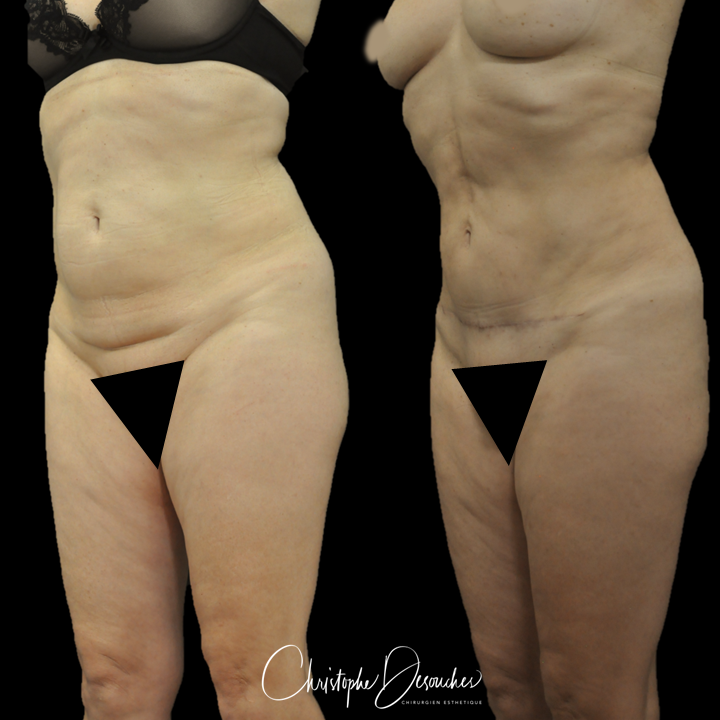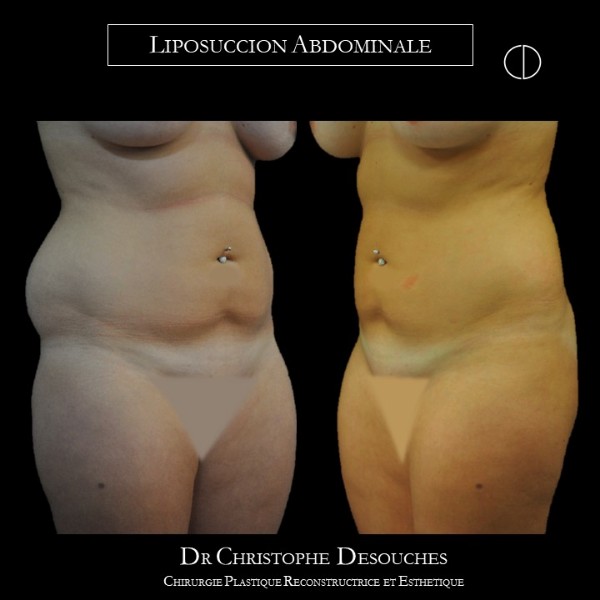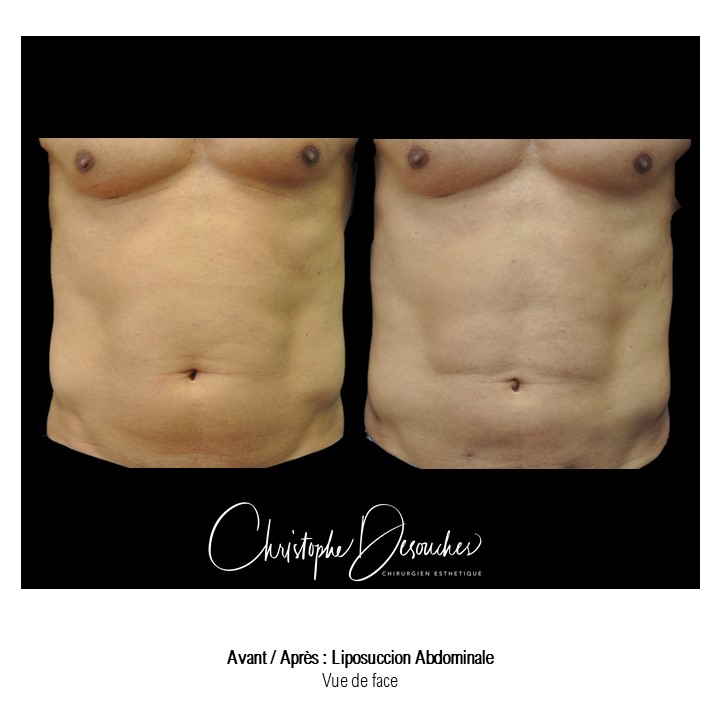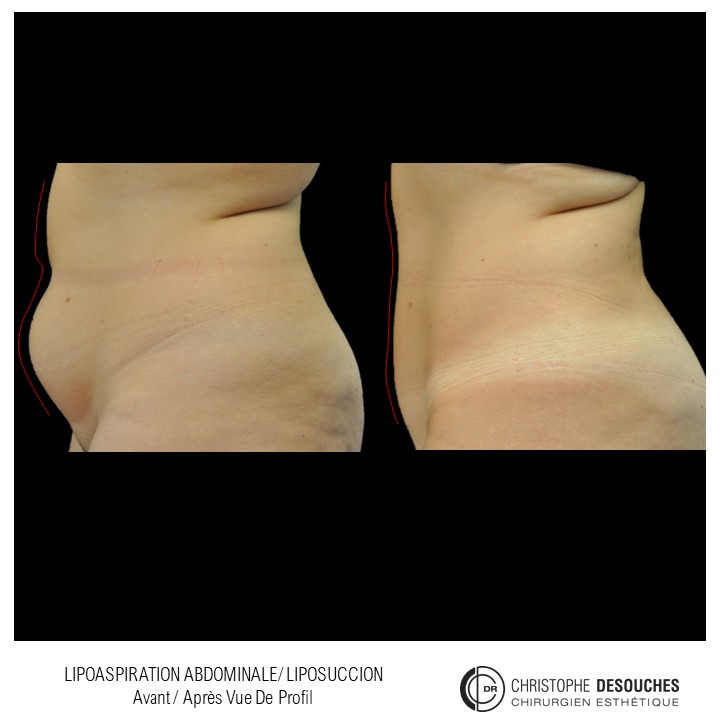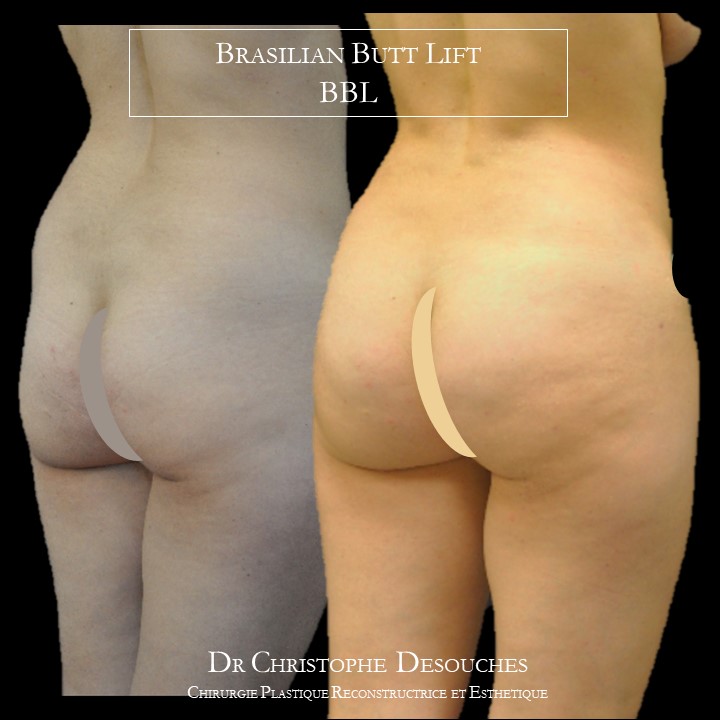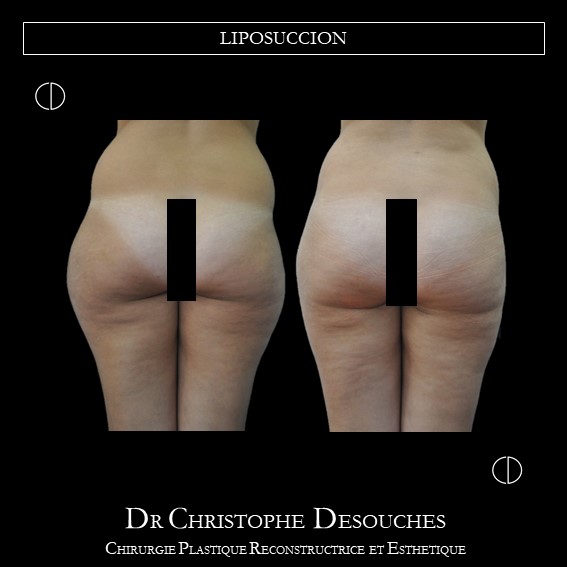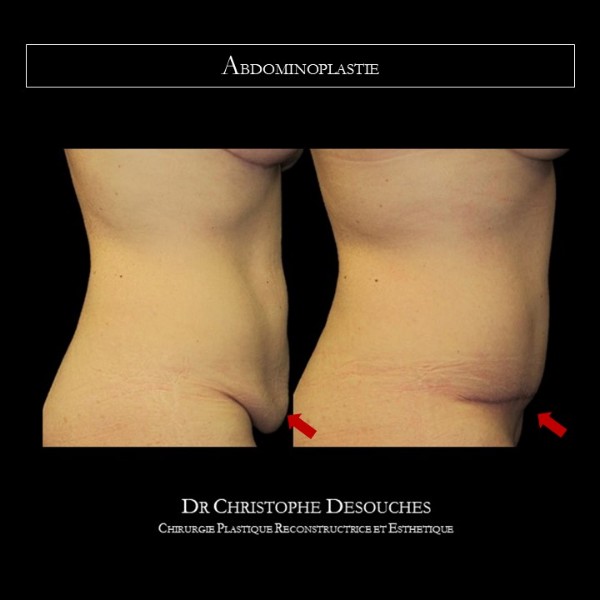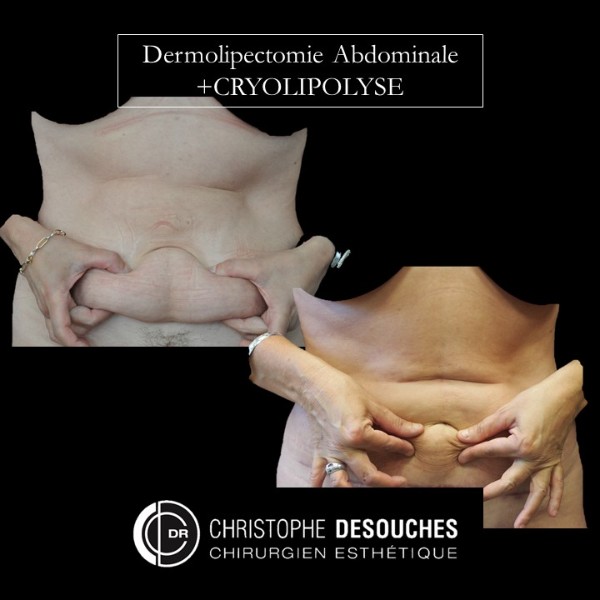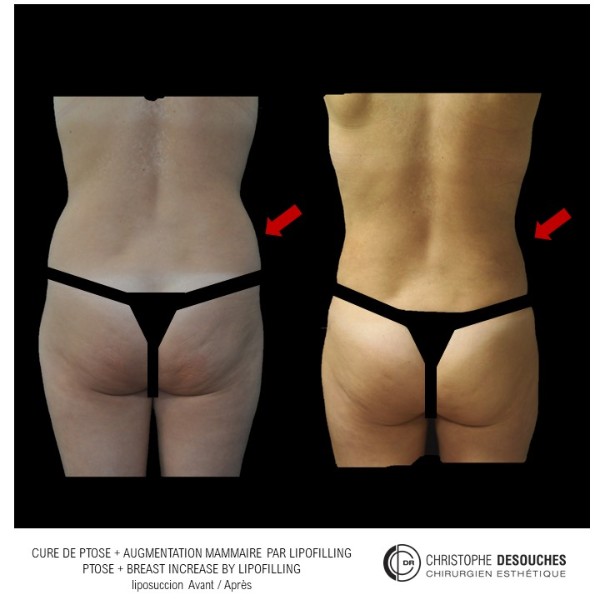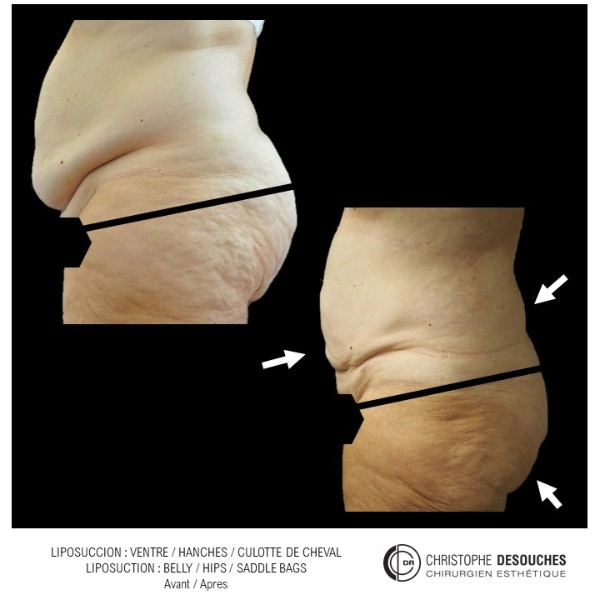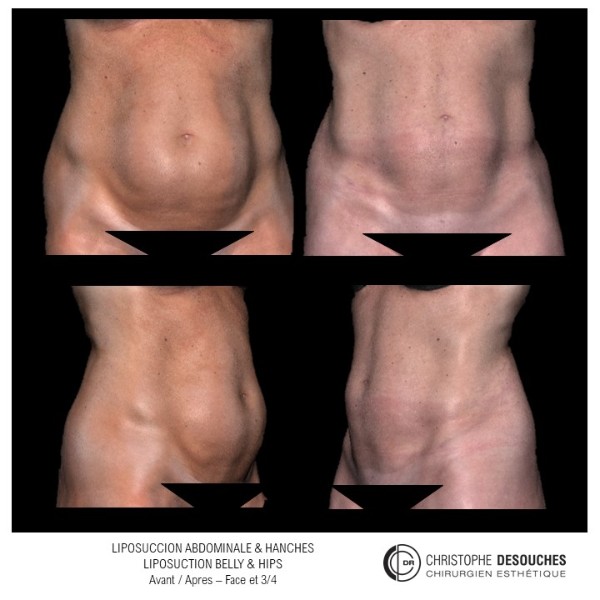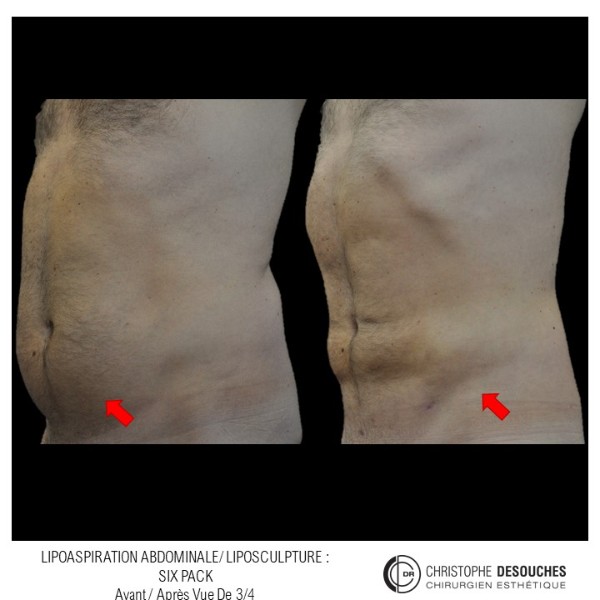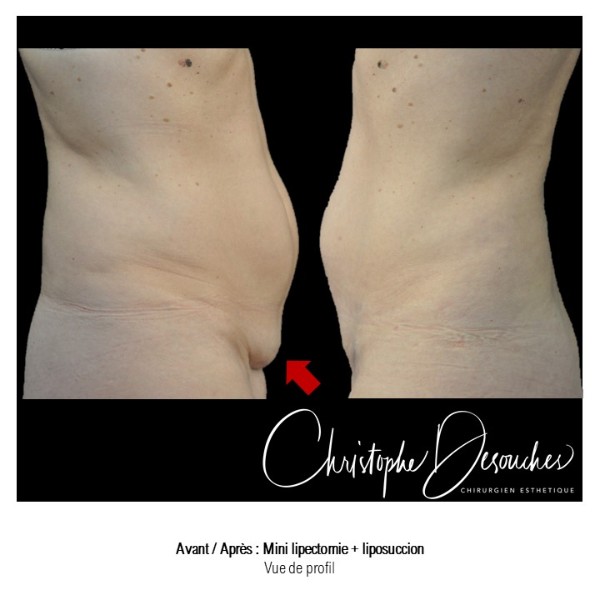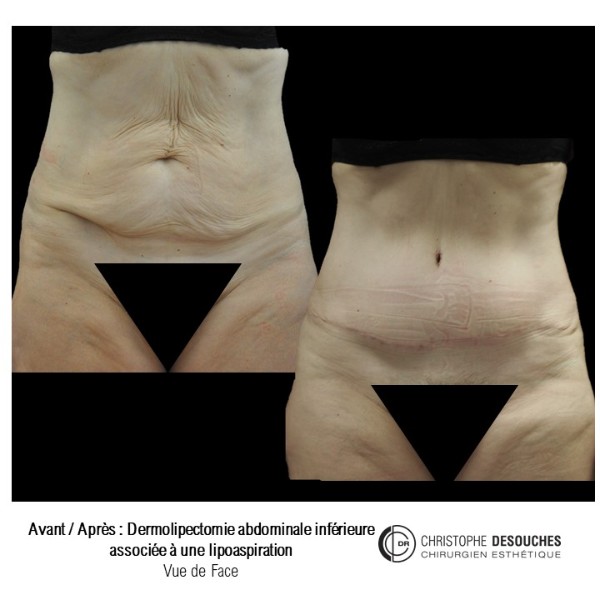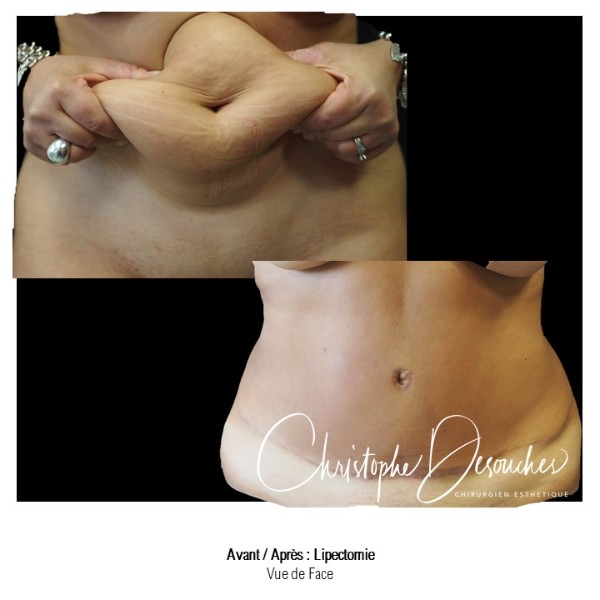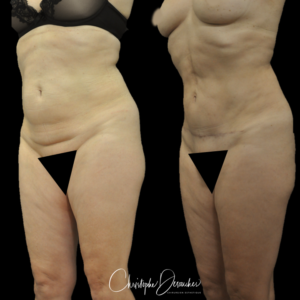
Abdominoplasty or lipectomy
The abdomen sometimes presents a significant variation in volume over the course of life. Pregnancies in women, excessive weight gain or major weight loss often leave significant consequences. These sequelae particularly affect the skin, which loses its elasticity and can present significant stretch marks. The abdominal wall can also be permanently damaged by multiple pregnancies, especially if there are twin pregnancies. This procedure only removes the stretch marks present on the skin that will be resected. It is particularly suitable for people who have sagging abdominal skin that does not improve with exercise or diet.
The intervention
The procedure involves resecting the skin below the navel to tighten the remaining skin. A plastic surgery can also be performed at the same time on the distended muscle wall or an aspiration of excess abdominal fat. The horizontal scar on the lower part of the abdomen can be more or less long depending on the amount of excess skin to be removed. At most, this scar extends between the two hips. It is sometimes necessary to create a vertical scar below the navel. The procedure is usually performed under general anesthesia. The sutures are generally absorbable threads hidden in the scar. At the end of the procedure, a drainage system is put in place to collect fluids and prevent the formation of a collection.
The initial consultation
The initial consultation allows you to jointly consider the different types of treatment based on your wishes and surgical options. The amount of excess fat, scars, and the quality of your abdominal muscles can affect the surgical procedure. You will also be asked to assess any tobacco intoxication that may, in certain cases, contraindicate the procedure. The consultation will also be an opportunity to check whether your procedure can be covered by your health insurance. The procedure may be postponed due to excess weight, and will only be considered after a weight-loss diet.
Complications
Lipectomy is a major procedure, but the after-effects are generally straightforward. Any surgical procedure, even when performed competently under maximum safety conditions, carries a risk of complications. There are risks of hematoma, infection, or reaction to anesthesia. It is important to know that anesthetic techniques, the products used, and monitoring methods have made immense progress. They offer optimal safety, especially when the procedure is performed outside of an emergency room and on a healthy person, but they can nevertheless carry the risk of serious complications.
The most feared complication is the migration into the bloodstream of a clot from a vein in a lower limb (phlebitis) into the lungs (pulmonary embolism). This complication can, when it is massive, lead to death. Wearing varicose veins, getting up early and taking anti-coagulant therapy can prevent this risk. Exceptionally, skin necrosis may appear around the scar which will have aesthetic consequences. These necrosis are very often secondary to persistent tobacco intoxication. It is imperative to stop smoking at least two months before the operation.
A decrease in abdominal sensitivity may be noted during the first few months. A return of the sensitivity is generally observed between the 6th and the 18th month. The evolution of scars is unpredictable and can be unfavorable with the occurrence of pigmentations, hypertrophy (red and inflammatory scar) or even keloids (hard and purplish rim). These scarring complications can compromise the aesthetic appearance of the final result. If an early complication appears, close monitoring is necessary and compliance with the instructions imperative.
Before the intervention
The anesthesiologist will be consulted less than one month before the procedure. Smoking must be completely stopped at least one month before the procedure. No medication containing aspirin should be taken in the 10 days before the procedure. It is imperative to fast (no food or drink) for 6 hours before the procedure. Just before the procedure and the two days before, an antiseptic soap will be used for showering.
After the intervention
The postoperative period is generally not very painful. The hospital stay is two to five days. The first dressing is usually applied on the day of discharge. The drain will be removed at this time. The sutures are generally absorbable and hidden in the scar and do not need to be removed. A compression garment will be worn for the month following the procedure. A work stoppage of 8 to 15 days is generally necessary.
A 3-month suspension from any sporting activity is recommended. It is important not to expose the scar to the sun for at least 6 months and to protect it with a full screen after this period. Dark scars at the beginning will gradually lighten and take on their final appearance after 24 months. They are generally little or not visible.
Important information
This text provides basic information on the principles and procedure of a lipectomy. A more detailed information sheet will be given to you during your consultation. A good understanding of the procedure and the expected results is essential before considering this procedure. It is important to emphasize that the goal of this surgery is to achieve improvement, not perfection. If your wishes are realistic, the result will satisfy you.




